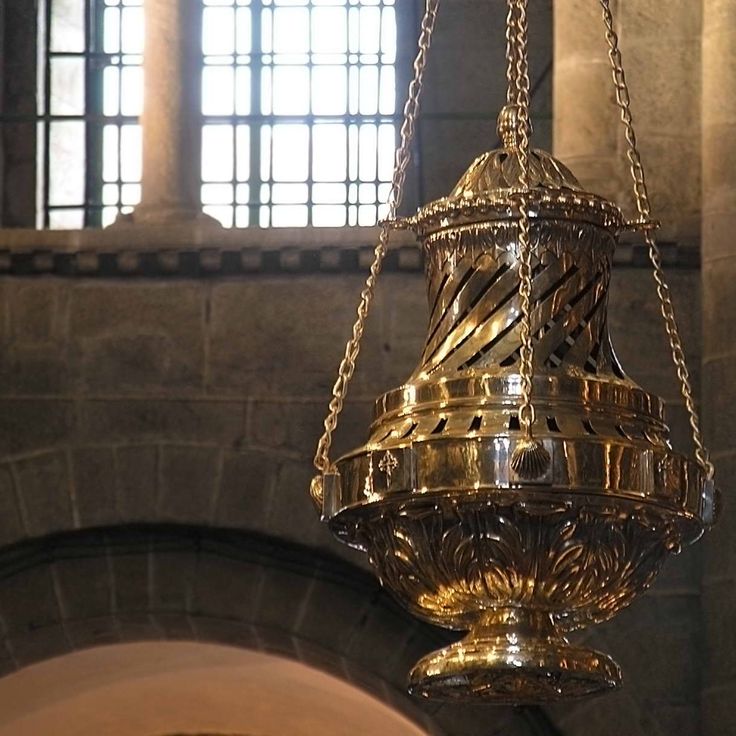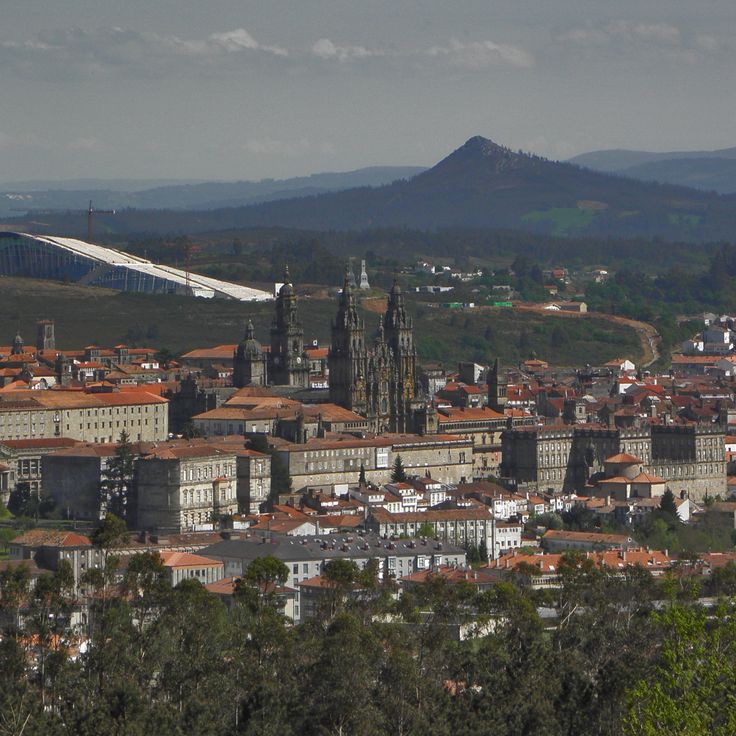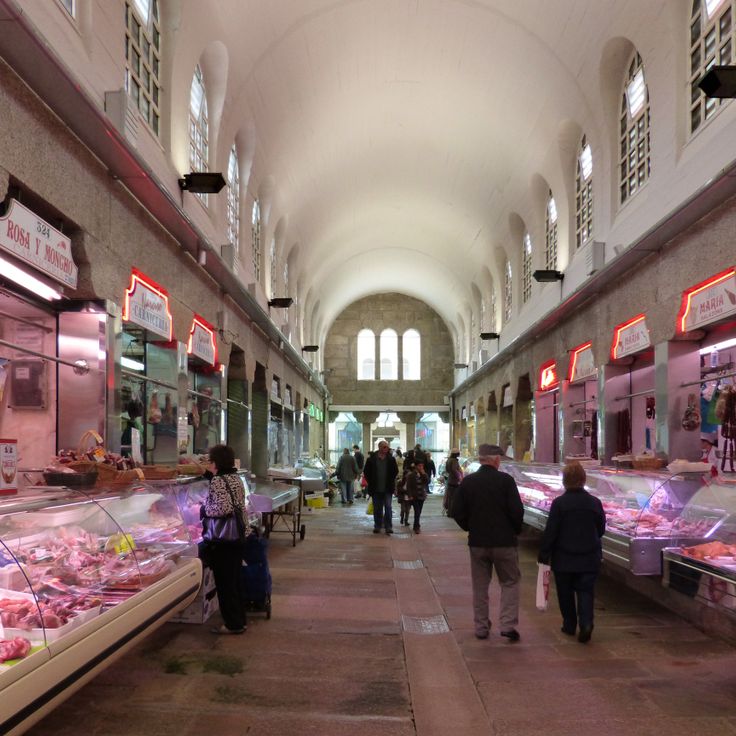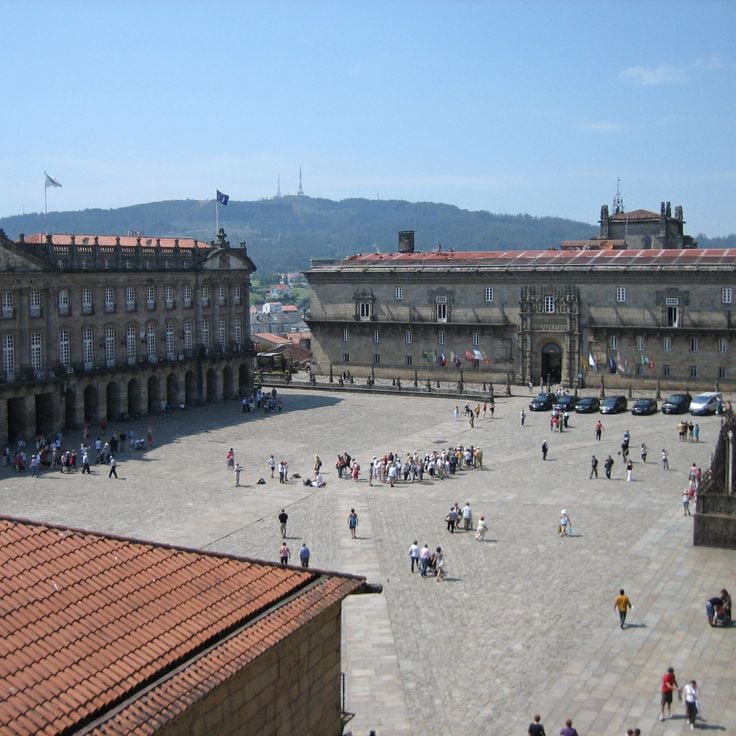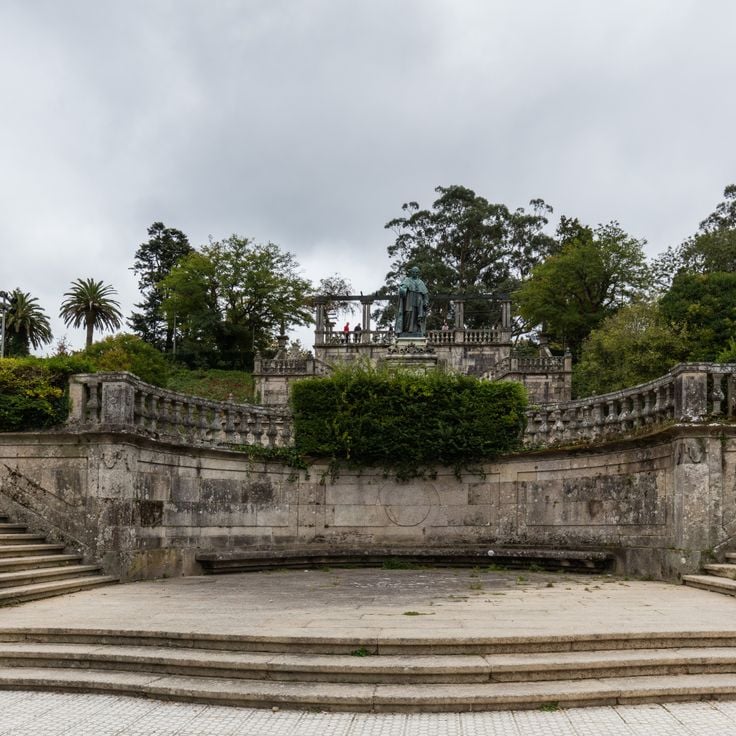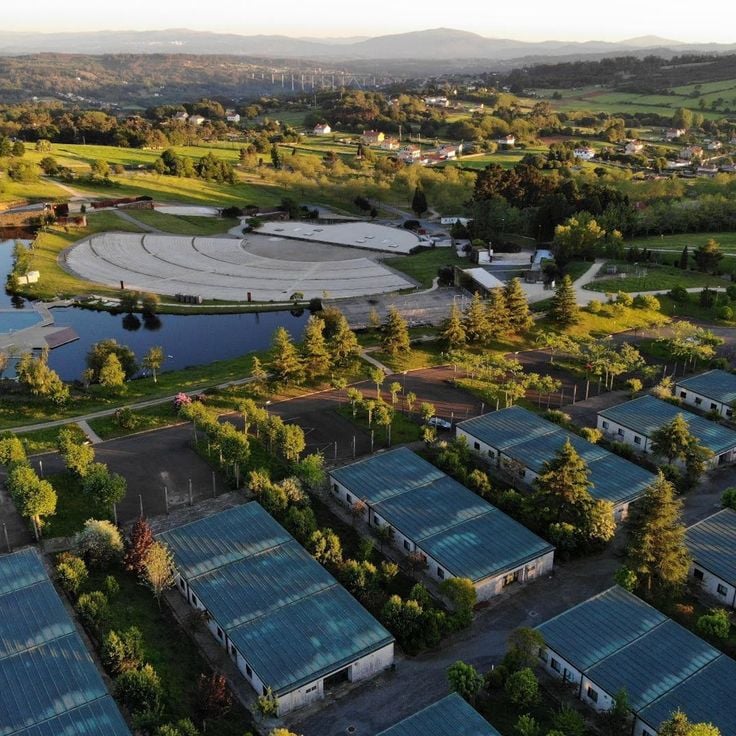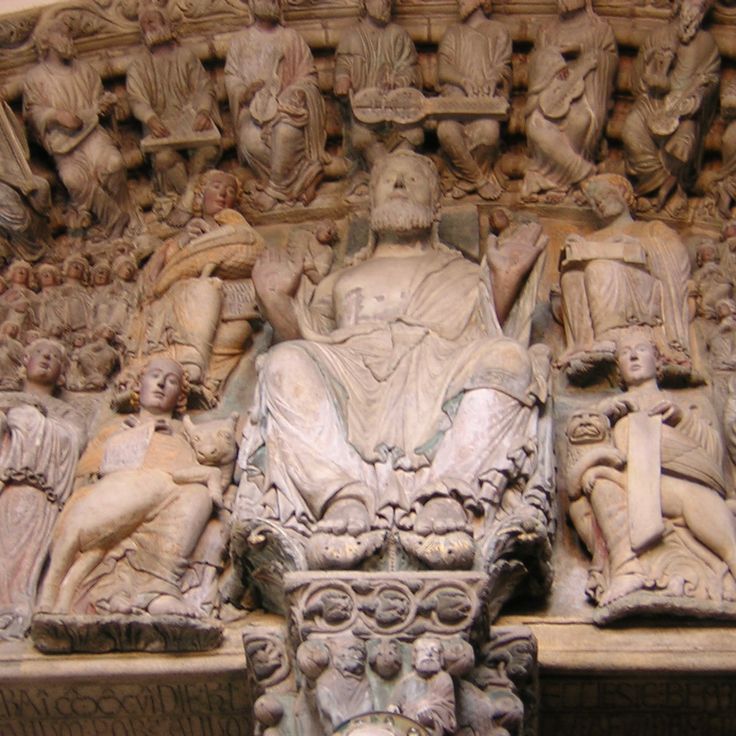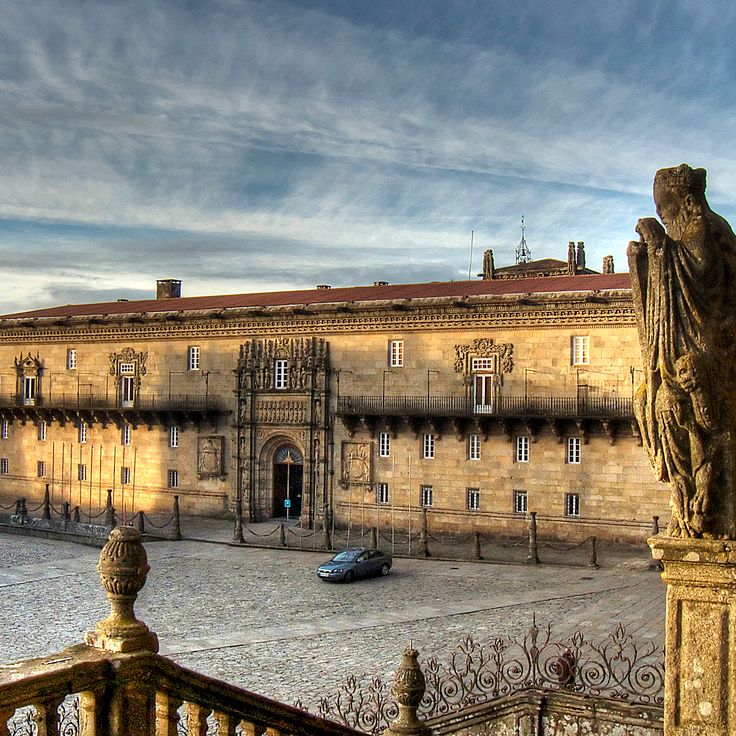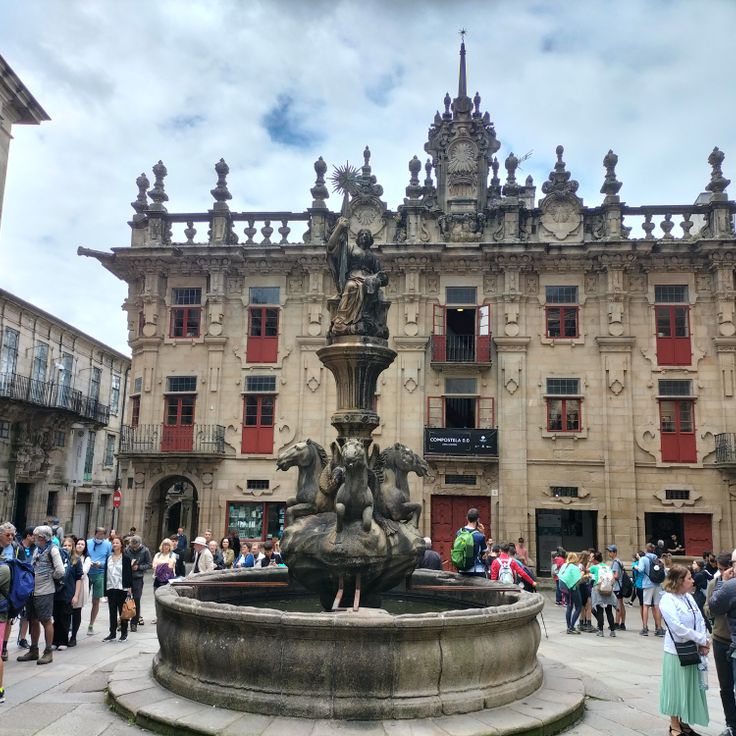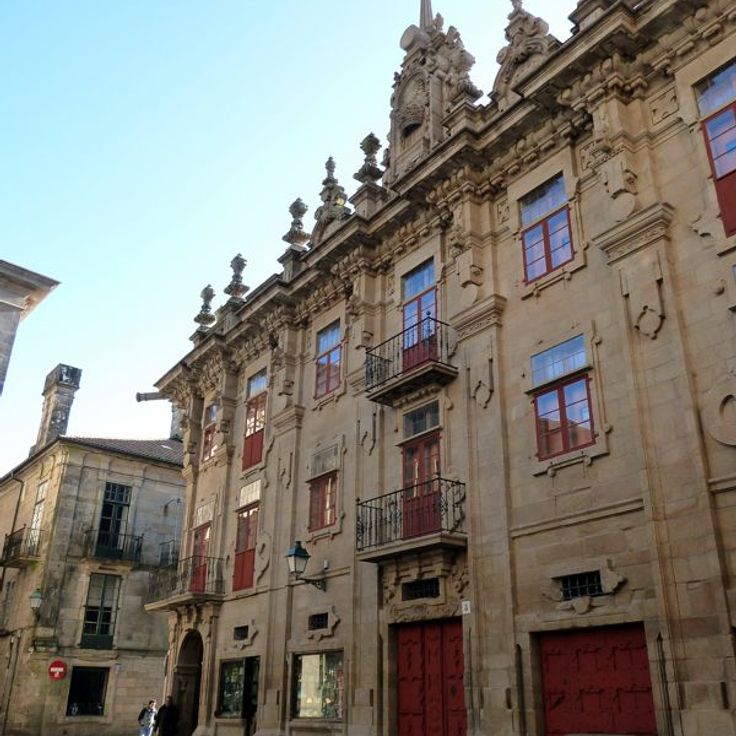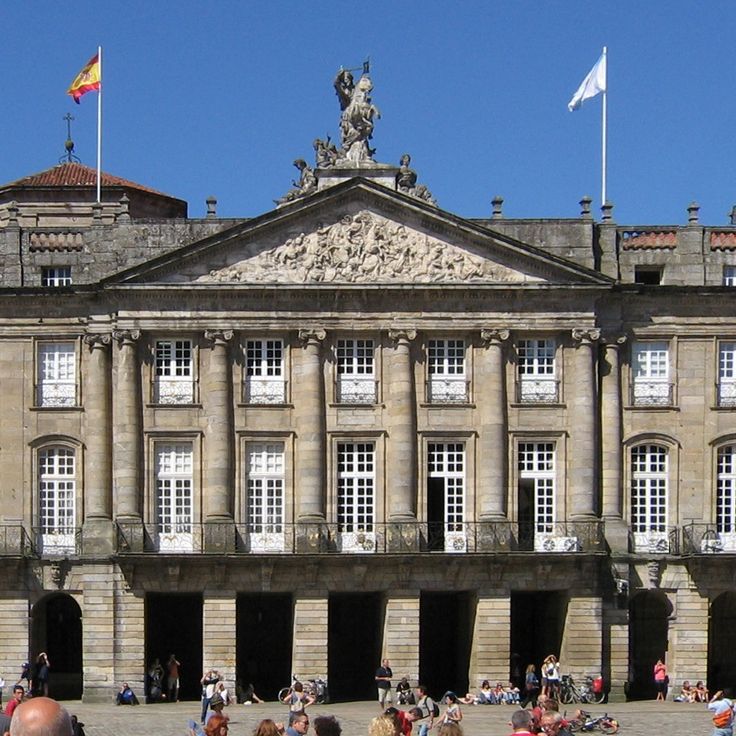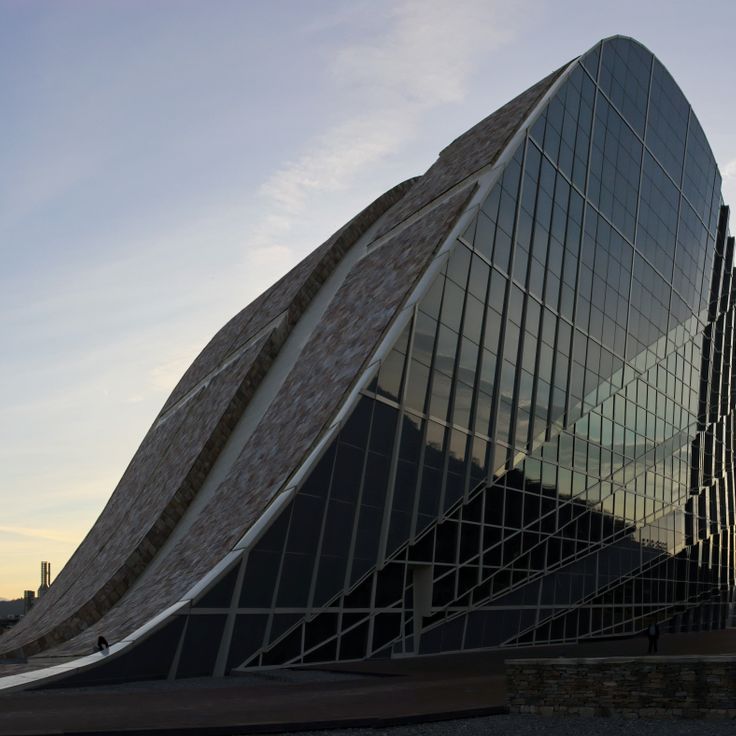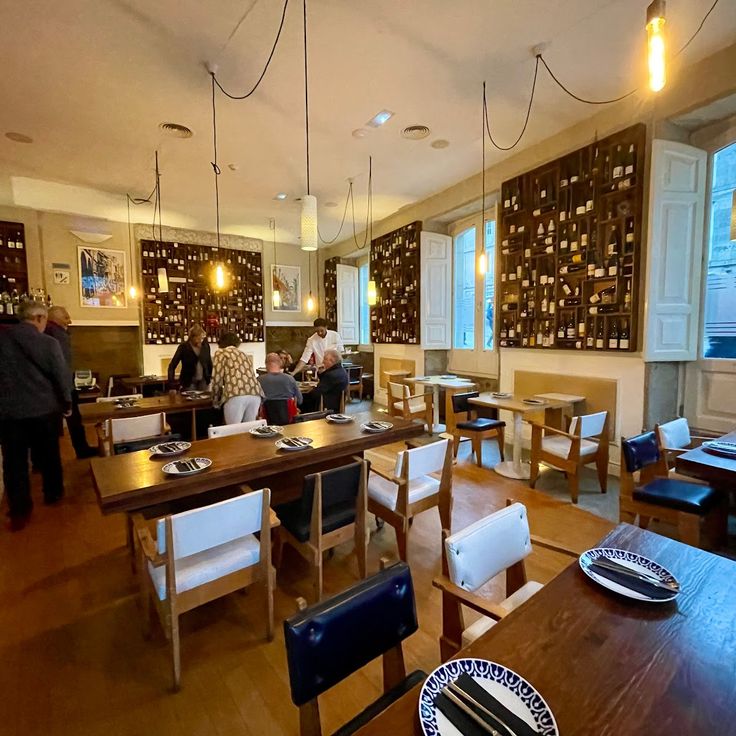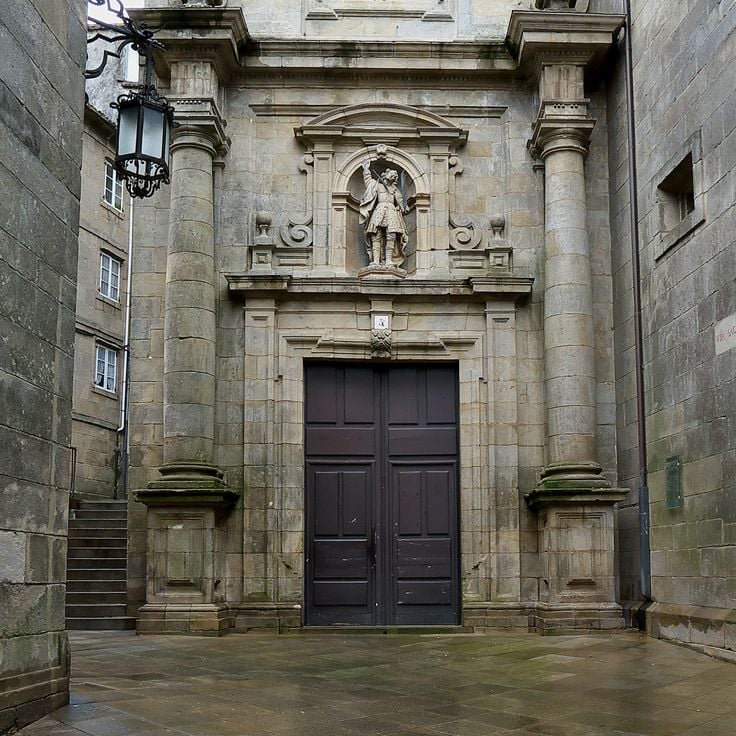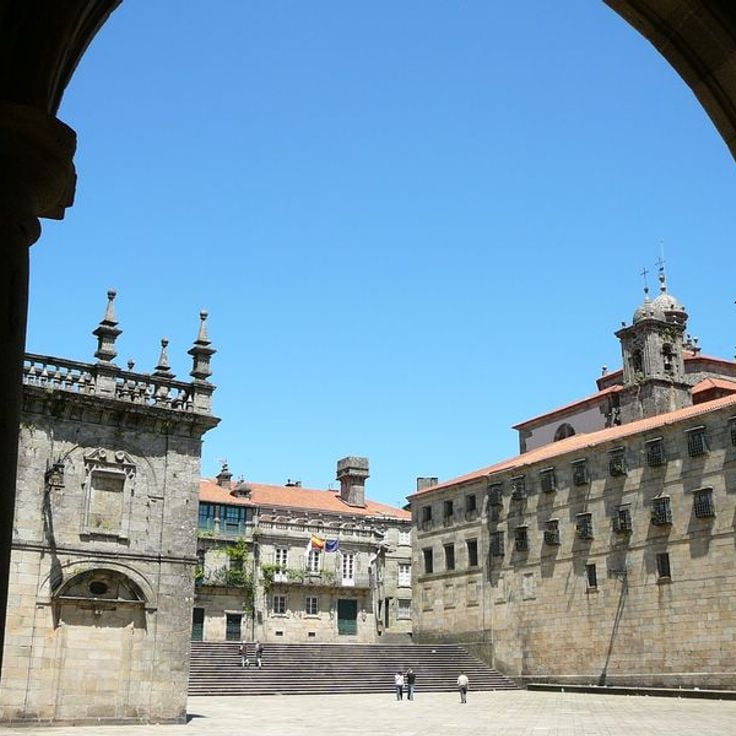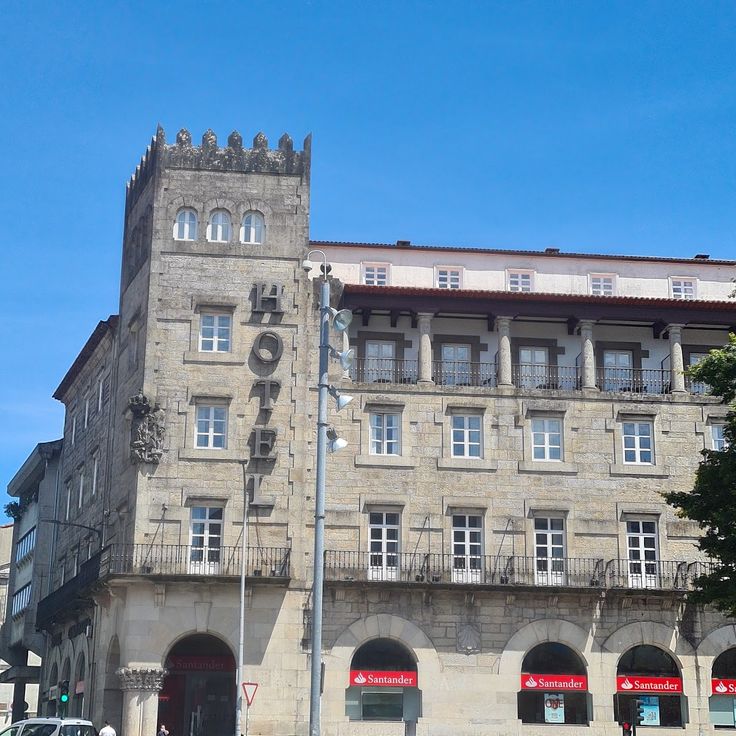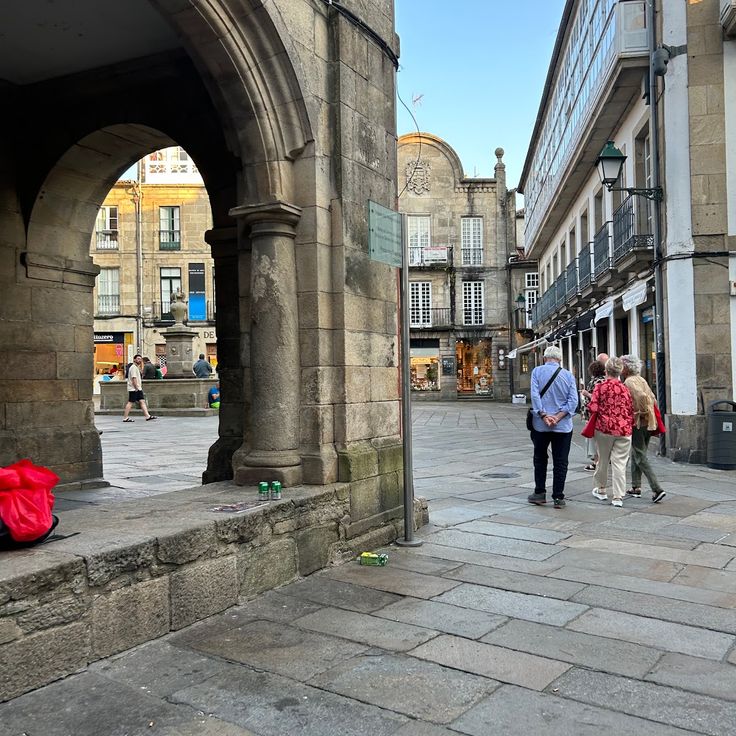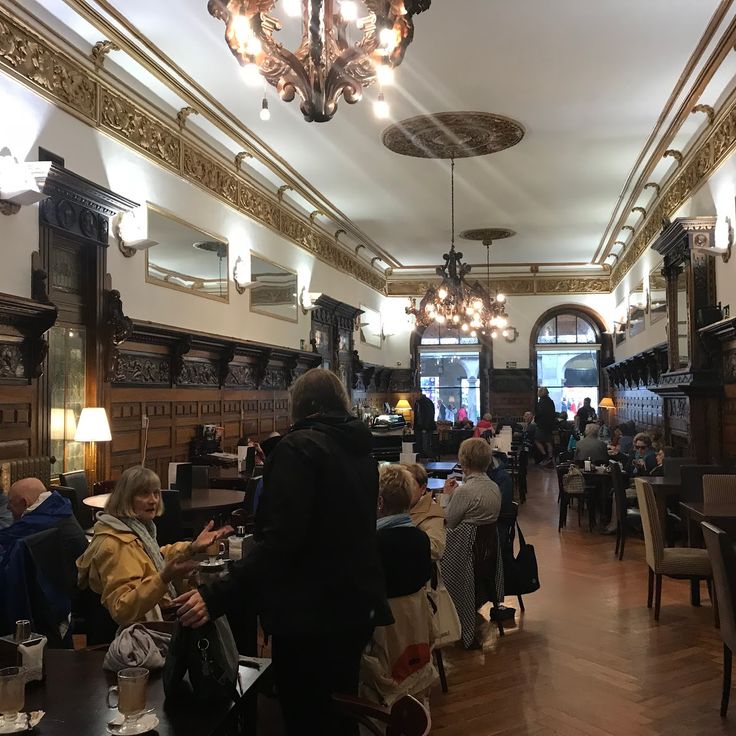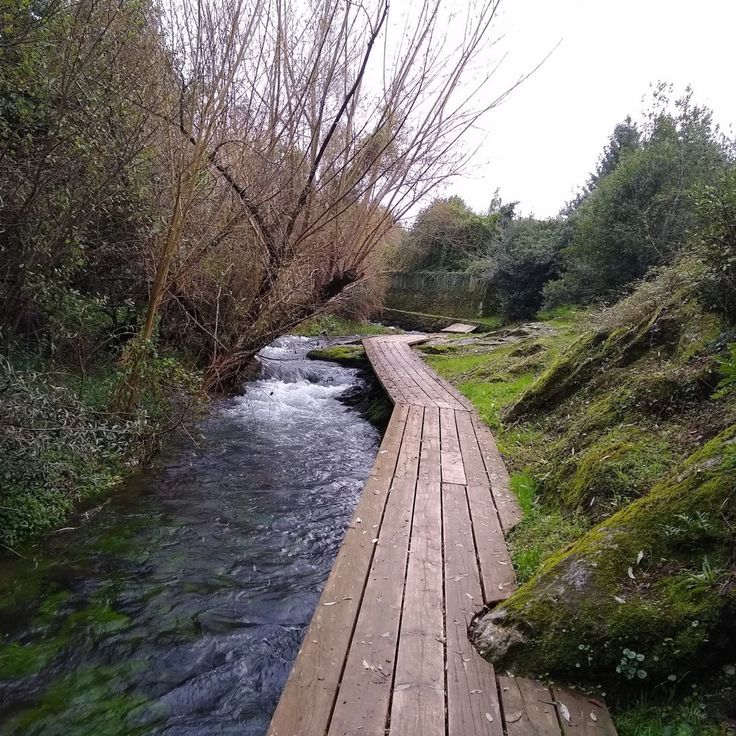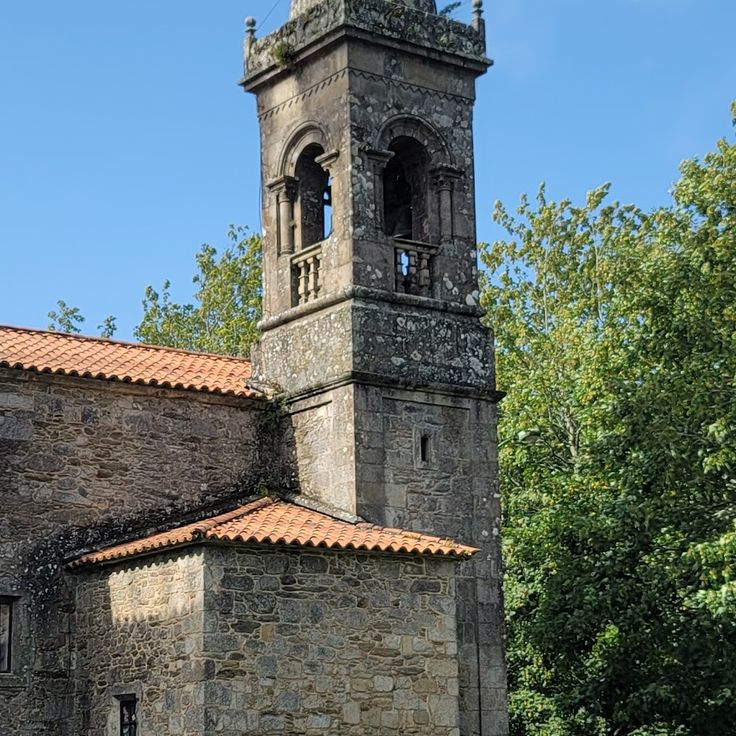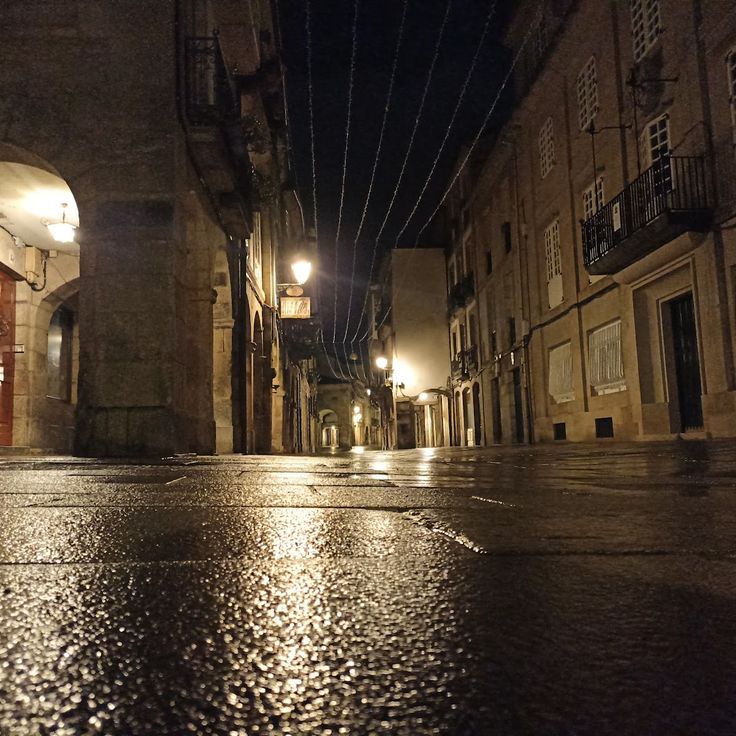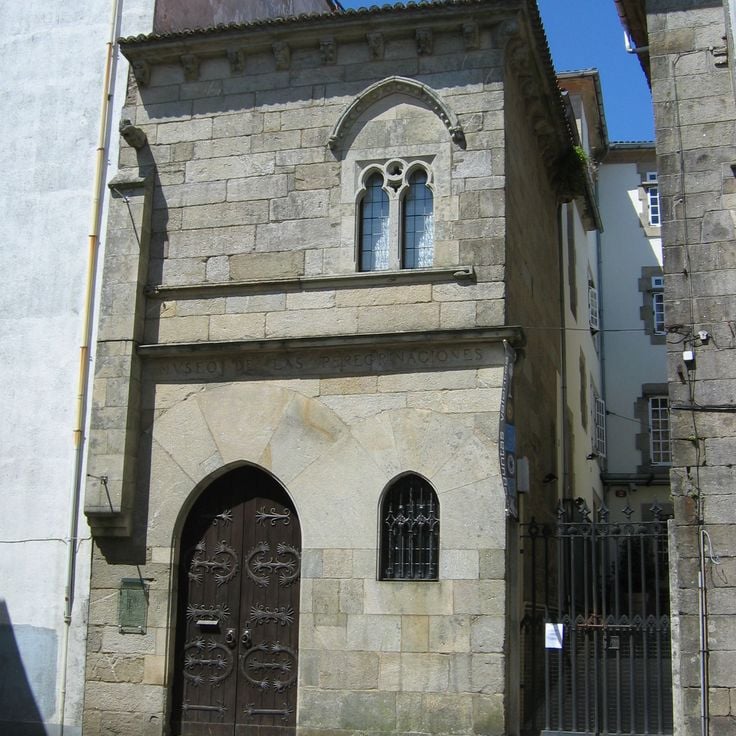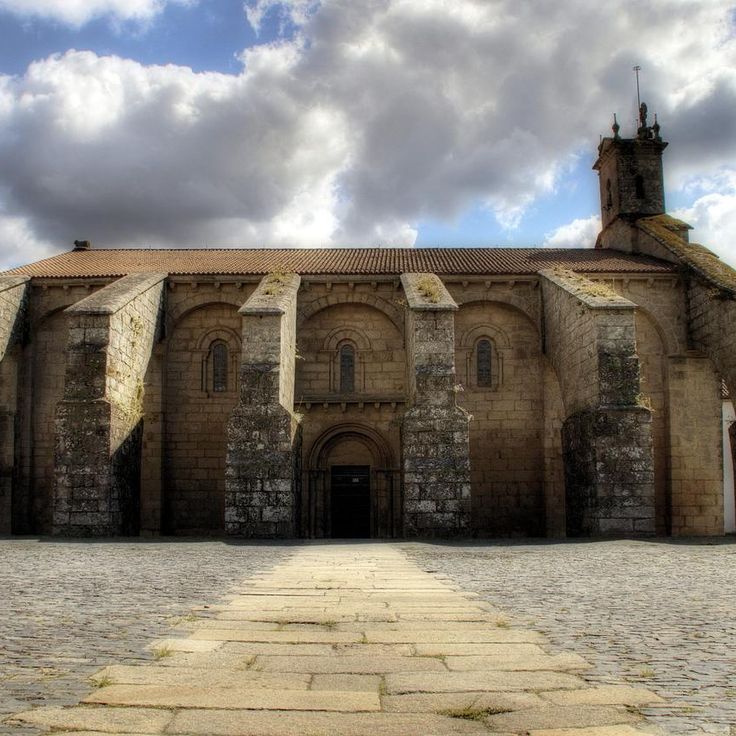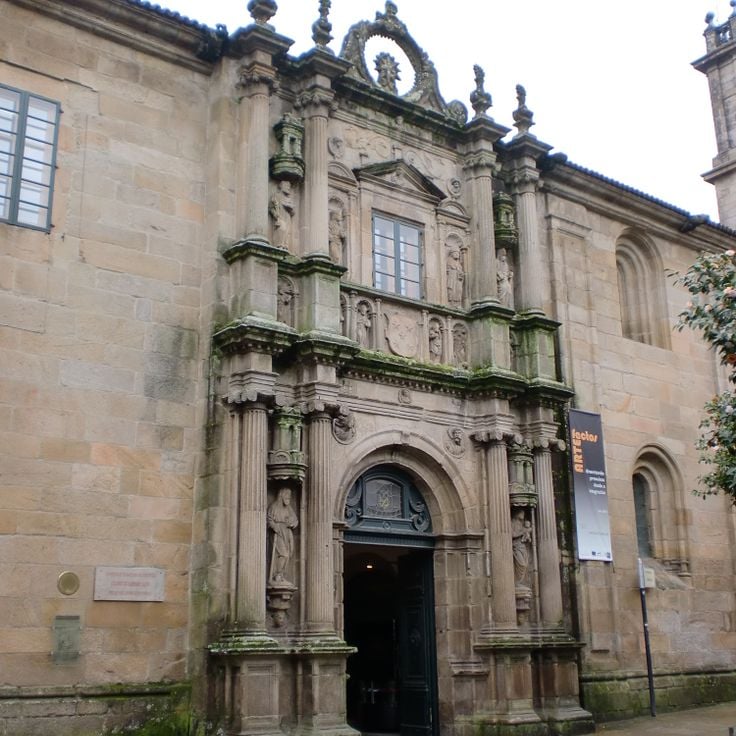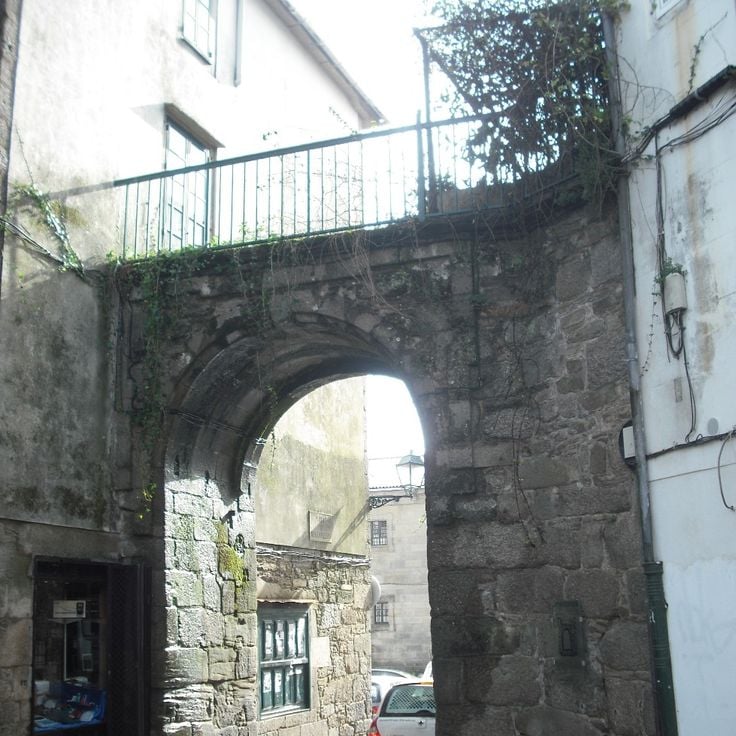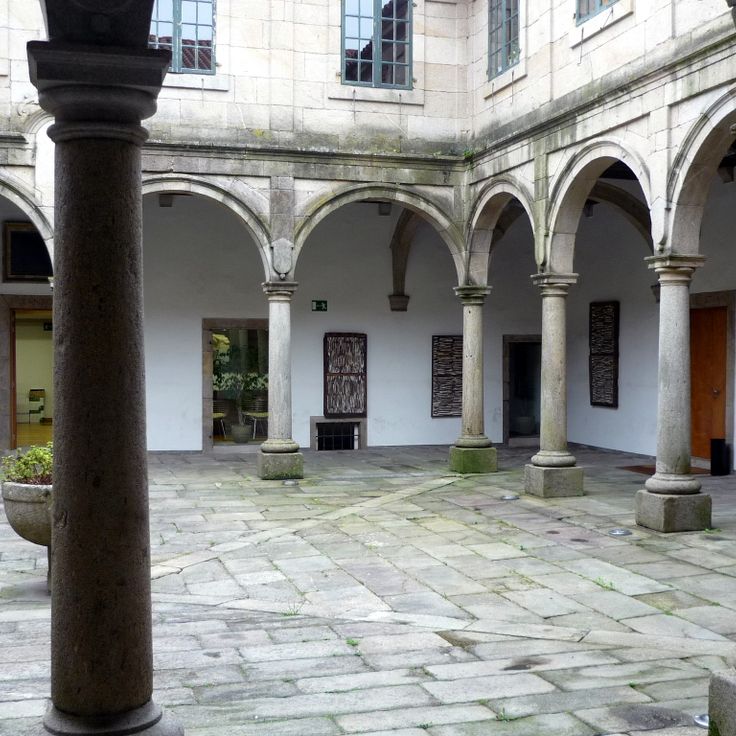Discover a selection of points of interest in Santiago de Compostela, bringing together religious, historical and cultural sites. This city in northwestern Spain offers much more than the endpoint of the famous pilgrimage route that bears its name: a 12th-century Romanesque cathedral, a medieval center with cobbled streets, a traditional market from 1873, Baroque monasteries and 19th-century parks make up its architectural and urban heritage. The Cathedral of Santiago dominates the old town with its Romanesque structure and Baroque Obradoiro façade. The medieval quarter extends around the Plaza del Obradoiro with buildings from different periods, including the 16th-century Hostal de los Reyes Católicos. The Mercado de Abastos has offered regional Galician products since 1873. The Monastery of San Martiño Pinario displays 17th-century Baroque architecture, while the Parque de la Alameda from the 19th century provides walking paths and viewpoints over the old town. The Collegiate Church of Santa María del Sar preserves Romanesque elements from the 12th century. These locations document the city's development from the Middle Ages to modern times.
The Cathedral of Santiago de Compostela was built in the 12th century in Romanesque style. According to tradition, it houses the relics of the Apostle James the Greater. The Pórtico de la Gloria at the western façade displays over 200 medieval stone sculptures created between 1168 and 1188 under Master Mateo's direction. The baroque main altar stands above the presumed tomb of the apostle. This cathedral serves as the destination of the Camino de Santiago pilgrimage route and welcomes pilgrims from around the world each year. The main nave reaches a height of 22 meters. The façade towers were added in the 18th century.
The Historic Quarter extends around the cathedral and preserves its medieval network of cobblestone streets. The narrow lanes connect religious buildings, plazas, and granite residential structures built between the 12th and 18th centuries. The area includes several churches, convents, and civil buildings that document the architectural heritage of the city.
The Mercado de Abastos de Santiago was built in 1873 and serves as a central location for trading regional products. The stalls sell seafood from Galician waters, local cheeses, vegetables from surrounding farms, and meats from the region. This covered market has functioned as a meeting point for traders and buyers for over a century.
The Museo do Pobo Galego is housed in the former Santo Domingo de Bonaval convent and documents the popular traditions of Galicia. The collection includes everyday objects, historical costumes and tools from various traditional trades of the region such as fishing, agriculture and crafts. The museum presents rural life and culture in Galicia from the 18th to the 20th century through thematic exhibitions that provide insight into living conditions, work methods and social structures.
The Plaza del Obradoiro serves as the heart of Santiago de Compostela and has been the arrival point for pilgrims walking the Camino de Santiago for centuries. This expansive square is bordered by four significant buildings: the western facade of the cathedral with its baroque Obradoiro frontage, the Pazo de Raxoi housing the city council, the former Hostal dos Reis Católicos now functioning as a parador, and the Colegio de San Xerome. The name Obradoiro derives from the stonemason workshops that operated here during the cathedral's construction.
Parque de la Alameda is a 19th-century municipal park with paths lined by centuries-old oak trees. Several fountains and kiosks are distributed across the site. Stone benches along the pathways offer views of the Santiago de Compostela Cathedral.
Monte do Gozo rises five kilometers from the Cathedral of Santiago de Compostela and marks the point where pilgrims first glimpse the city's towers. Stone sculptures depict groups of pilgrims on their journey, commemorating centuries of pilgrimage tradition along the Camino de Santiago. From this hill, views extend across the old town with its historic buildings and church spires. The site serves as a final rest stop before many pilgrims reach their destination.
The Monastery of San Martiño Pinario was built in the 16th century and displays baroque architecture with ornate facades and altarpieces. This complex includes a cloister with arcaded galleries, a historical library containing ancient manuscripts, and a museum of religious art. After the cathedral, this monastery is the second largest religious building in Galicia and served for centuries as a Benedictine abbey that hosted pilgrims on the Way of Saint James.
The Pórtico de la Gloria forms the main entrance to the Cathedral of Santiago de Compostela and was created between 1168 and 1188 by Master Mateo. This monumental portal displays Romanesque sculptures depicting the Last Judgment, flanked by representations of numerous prophets and apostles. The over two hundred figures are arranged in three archivolts and represent a masterwork of medieval stone sculpture in Europe.
The Hostal dos Reis Católicos was built in the 15th century by the Catholic Monarchs Ferdinand and Isabella as a royal hospital to care for pilgrims on the Way of Saint James. The building features a Plateresque facade and contains four interior courtyards with fountains. Today, this historic structure operates as a hotel while preserving its original architectural layout. The establishment is located directly on the cathedral square and ranks among the significant historical buildings of the old town.
The Museo das Peregrinacións e de Santiago documents the history of pilgrimages to Santiago de Compostela from the Middle Ages to the present day. The exhibition displays religious artworks, historical documents, pilgrim badges, and liturgical objects that illustrate the spiritual and cultural importance of the Way of Saint James. The museum explores the development of the city as a pilgrimage center and presents archaeological findings along with testimonies from the various periods that have shaped Santiago de Compostela.
Platerías Square is located on the south side of Santiago de Compostela Cathedral and is surrounded by historic buildings. A fountain stands at the center of the square, flanked by stone sculptures and architectural elements from the 11th century. The cathedral façade displays Romanesque reliefs depicting biblical scenes, including representations of the Temptation of Christ and the Creation of Adam.
The Casa do Cabildo was built in the 18th century in Baroque style and is located on Plaza de las Platerías, one of the four squares surrounding the cathedral. The building originally served as the seat of the cathedral chapter and was constructed as an architectural solution to harmonize the square. The facade displays elaborate stonework with religious and decorative motifs, along with wrought iron balconies. This three-story building integrates into the historic ensemble of the old town and documents the urban development of Santiago de Compostela during the Baroque period.
The Palais Raxoi was built in the 18th century under Archbishop Bartolomé Rajoy and displays neoclassical architecture with a symmetrical facade that spans the entire north side of Plaza del Obradoiro. The building currently serves as the city hall of Santiago de Compostela and also houses the seat of the Galician regional government. The palace facade faces the cathedral directly and forms an architectural frame for the historic square.
The Galician Centre for Contemporary Art displays rotating exhibitions of international artists in a building with minimalist architecture. The institution hosts multimedia installations and experimental works from current artistic production. The centre was established to provide the Galician region with a space for modern art forms and promotes dialogue between local and international artists through regular events and educational programs.
The City of Culture stands on Monte Gaiás and opened in 2011. American architect Peter Eisenman designed this complex, which includes a library, a museum of Galician history, a theatre and several exhibition spaces. The undulating stone and glass structures cover 70,000 square metres and integrate into the hill's topography. The project ranks among Spain's largest cultural centres.
Café Altamira is a literary café established in the 20th century in the historic center of Santiago de Compostela. This cultural meeting place regularly hosts readings, art exhibitions, and gatherings with writers and artists. The café maintains the tradition of Galician intellectual cafés and provides a space for cultural exchange in an authentic setting.
The Monastery of San Payo de Antealtares was built in the 16th century to house a community of Benedictine nuns. This religious building stands on Quintana Square, adjacent to the Cathedral of Santiago de Compostela.
Quintana Square extends between the Monastery of San Paio de Antealtares and the southern facade of the cathedral. A wide stone staircase divides this medieval square into two distinct levels, connecting the upper Quintana de Vivos with the lower Quintana de Mortos, which takes its name from the former cemetery.
The Azabachería Square stands in front of the north facade of the Cathedral of Santiago de Compostela. For centuries, craftsmen worked jet here, a black stone they carved into souvenirs for pilgrims. This square formed one of the main entrances for pilgrims arriving in the city from the north via the Way of Saint James. The name Azabachería derives from the Spanish word for jet. The square connects the cathedral with the northern districts of the city and served as a trading place for religious items.
Rúa de Vilar connects the cathedral to the historic centre and ranks among the busiest streets in the old town. Its stone architecture dates mostly from the 18th century and displays typical Galician elements such as covered arcades, wrought-iron balconies and timber-framed houses. Numerous shops, bookstores and traditional establishments line both sides of the street. The street served for centuries as a main thoroughfare for pilgrims and merchants.
Café Casino was established in the 19th century and features a main hall decorated with mirrors and ornate moldings. This historic establishment served as a meeting place for writers and artists who gathered here to discuss literary and artistic topics. The decor reflects the taste of the Belle Époque period.
The Río Sarela flows through the western part of Santiago de Compostela and offers walking paths along its banks. The trails pass through wooded areas with natural vegetation and allow quiet walks near the historic center. The river forms a green corridor that residents and visitors use for daily outings. The riverside areas are lined with trees and shrubs that provide habitat for various bird species.
The Chapel of Santa Susana dates from the 12th century and stands on a hilltop within a public park. This Romanesque church was built from granite and is surrounded by centuries-old oak trees. The location provides views over the surrounding countryside of Santiago de Compostela.
Rúa Nova is a 12th-century medieval street characterized by its covered galleries. Along this street stand representative buildings and shops housed in historic stone residences that preserve the architectural heritage of Santiago de Compostela's old town.
The Casa Gótica is a medieval residence from the 14th century located in the historic center of Santiago de Compostela. The facade displays paired windows with central columns and carved stone decorations that are characteristic of Gothic civil architecture in urban residential buildings of this period. The structure provides evidence of the development of secular construction in the Galician city during the late Middle Ages.
The Church of Santa Maria do Sar was built in the 12th century in Romanesque style. Its slanted walls are supported by massive buttresses that were added later to prevent the building from collapsing. This architectural peculiarity resulted from foundation problems on unstable ground. The cloister preserves Romanesque capitals featuring floral and geometric motifs. The attached museum displays liturgical objects and sacred art from various periods. The church is located about one kilometer from the historic city center along the banks of the Sar River.
The Pazo de Fonseca was built in the 16th century and combines Renaissance architectural elements with a university library. The collection holds more than 40,000 historical volumes. This building served as an educational institution of the University of Santiago de Compostela until the 19th century and housed various academic faculties. The courtyard displays typical features of Galician Renaissance style with arcaded galleries and columns. The library preserves important manuscripts and incunabula. The Pazo is located in the historic center of Santiago de Compostela, a few steps from the cathedral.
The Porta de Mazarelos was built in the 14th century and remains the only surviving gate of the original seven that once provided access to Santiago de Compostela. This stone structure marked one of the main entrances to the fortified old town and served for centuries to control the movement of goods and people. The construction displays typical features of medieval defensive architecture with its solid rounded arch and thick stone walls. Today, the Porta de Mazarelos stands as a historical witness to the medieval city fortifications and recalls the time when Santiago was a walled city.
The Chapel of San Roque was built in the 18th century from granite stone and features a Baroque facade with a wrought iron bell. This religious building stands at the eastern entrance to the medieval old town of Santiago de Compostela and historically served as a landmark for pilgrims on the Camino de Santiago. The chapel is dedicated to Saint Roch, venerated as the patron saint against the plague.
